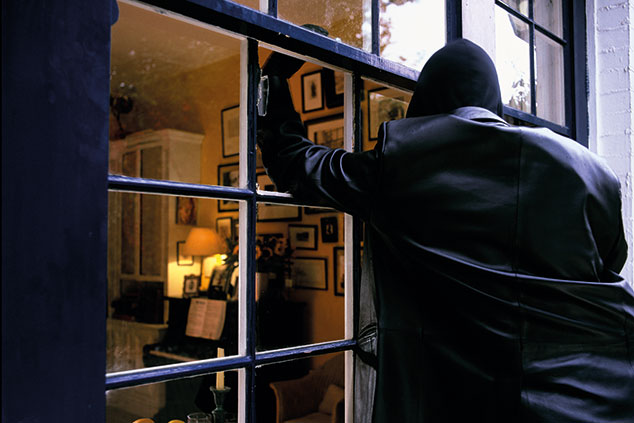
The nights are drawing in and that means burglars are out in force. Last year there was a 35% increase in insurance claims for forced burglary in the darker months compared with the lighter ones. So the clocks going back “should act as a timely reminder to protect our homes from burglars during the darker days”, says Tim Downes of Halifax Home Insurance. The cover of darkness helps thieves when it comes to breaking into our homes. But there is plenty you can do to protect your belongings. First of all, lock your door. Believe it or not, 5% of burglars get in through an unlocked door, according to data from National Home Security Month.
Leave a light on when you are out and fit “sensor lights at the front, side and rear of your home”, says Grace Gausden on This is Money. “This can act as a good deterrent as night-time thieves… will be seen should they intrude”. Also invest in some smart technology. Almost 90% of ex-burglars told Co-op Insurance they would be put off breaking into smart homes. You can acquire smart home security cameras that will automatically detect movement and light up the area. They also make a recording and notify you via your phone that movement has been detected.
You should also make sure your home insurance will pay out if you are broken into. Cheap locks could leave you unable to claim as they can be picked easily. “Insurers are likely to pay out only if there are signs of forced entry and tend to reject claims if locks have been picked, doors have been left open, or burglars have obtained a copy of keys,” says Adam Williams in The Sunday Telegraph.
Make sure your locks are BS 3621, the British standard for security, and that they are locked. If you move into a new home, get the locks changed so you know exactly who has a key. When you shop around for a new home insurance policy, check the details you’ve entered before you purchase. In an effort to be helpful price-comparison sites may be invalidating your home insurance before you even buy it. The likes of moneysupermarket.com and confused.com pre-fill forms with estimated data on when your house was built and how many rooms it has. But “pre-populated information can be wrong”, says Sam Barker in The Daily Telegraph, and any errors could invalidate your policy. So make sure you check everything.